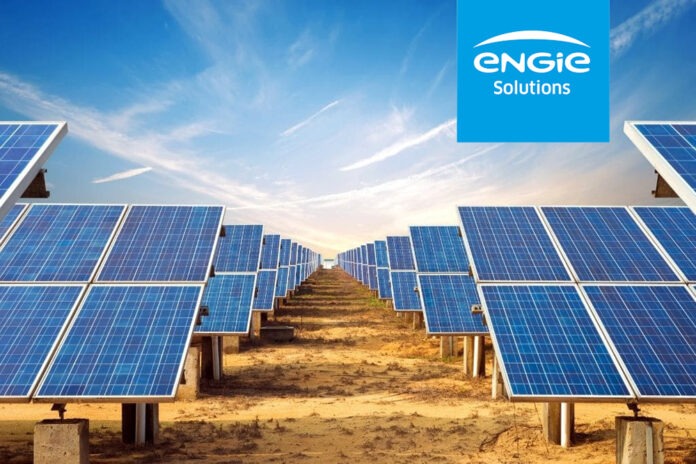PUBLISHED IN COOPERATION WITH
Aiming to drive the country’s green transformation, Kuwait has several energy efficiency initiatives underway to improve the sustainability of its flagship projects.
Sustainability has become the key for Kuwait to mitigate the environmental impact of its oil production, an economic activity that accounts for approximately 43 percent of its GDP. Kuwait’s petrochemical industry, with the massive Al Zour refinery as its flagship, will remain one of the most important in the world according to the Vision 2035 roadmap. But in addition to that fossil fuel-focused facility, the country has developed several environmental projects for the production of clean fuels, with the intention of remaining a regional leader in downstream refining.
One of these is a new hydrocracking unit at the Mina Abdullah refinery, which became operational in 2021, to produce up to 70,000bpd of low-sulfur diesel and kerosene that meet European standards. Another major project is the Sulaibiya wastewater treatment plant, which covers 26 percent of the country’s overall water demand, serving non-potable uses in agriculture and industry, as well as aquifer recharge. Another important water treatment facility is the Umm Al Hayman plant, another project with which the country is highlighting its interest in eliminating the waste of water resources so that they can be used by the economic sectors.
“ENGIE has a strong commitment to accelerate the energy transition, which we do in three ways: by replacing conventional energy with renewables, deploying cooling and heating networks, and saving energy through our energy services,” said Yassine Lafhail, Kuwait general manager at ENGIE Solutions. With the digitalization and automation solutions offered by the company, Lafhail estimates that Kuwaiti companies can reduce their energy costs by up to 90 percent, a percentage that, if achieved, represents an environmental saving that reduces carbon emissions into the atmosphere. “As the nation moves towards reducing its greenhouse gas emissions, mitigating Kuwait’s high per-capita power consumption is crucial,” he added.
Part of Kuwait’s sustainability vision is to increase the share of renewables in its energy mix to 15 percent by 2030.
A major project to achieve this goal is the planned Subiya solar PV water storage plant in Al Jahra with a generating capacity of 30MW, which will start its construction phase in 2023 and enter commercial operation in 2025. Another asset playing a key role in this transition is the Shagaya renewable energy project, which is expected to have a clean energy generation capacity of 3.2GW by 2030. Some phases of the commissioning of this facility, which mixes wind and solar generation systems, are already in operation.
With such projects, the solar energy sector in Kuwait is expected to register a compound annual growth rate of 7 percent between 2022 and 2027, according to a report by consulting firm Mordor Intelligence. Much of this demand comes from companies, such as those in the oil and gas sector, which through power purchase agreements (PPAs) seek to decarbonize their energy supply and part of their operations with solar projects.
“We have received many inquiries for solar energy in the private sector. Most private sector clients are large companies looking into solar and renewable energy,” said Hamad Al Radhan, CEO of Life Energy, a firm that provides smart renewable energy solutions in Kuwait and the Gulf region.
This company has closed several PPAs with companies and currently sees significant solar energy development in the country, but in recent years has seen a great opportunity in energy efficiency management around new government buildings due to local regulations.
“The government has recently introduced a regulation for new buildings of public entities to produce 10 percent of the consumption of electricity with renewables,” said Al Radhan, who points out that there is also currently a program that offers discounts on electricity rates to private companies that make tangible efforts to save energy. “Efficiency solutions are one of the most prominent services we can provide in Kuwait. We have tried to push for those types of projects and strategies and shift the priorities from producing clean energy to saving energy, which cuts 10 percent of the initial cost of solar power, renewable energies, and more,” he added.
One of the flagship projects in terms of energy management is Terminal 2 of the international airport, currently under construction. This project, which aims to become the largest building in the world to achieve LEED Gold certification, will have solar panels on its roof to supply part of the energy it will consume, will use a system to collect wastewater from the laundries and treat it to provide 30 percent of the water needed for the toilets, and uses low-carbon materials for its construction.
“It is difficult to make a drastic shift from unsustainable to high-performance buildings that are respectful of the environment and resource consumption,” said Sandra Draskovic, General Manager at the Kuwait Green Building Council. Achieving a change in engineering techniques to build sustainably must be done gradually, so one of the government’s priorities to advance tangible sustainability initiatives is to get citizens to improve their efficient management of resources to save energy. “If consumers achieve a certain percentage of water and energy, they will have their annual bill amount reduced by 40 percent for electricity and 50 percent for water bills,” Draskovic concluded.


















